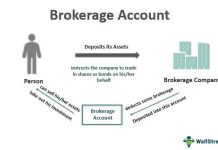Navigating Employee Benefits Costs: An In-Depth Analysis
In the dynamic landscape of employee management, understanding the costs associated with employee benefits is paramount. This comprehensive guide aims to unravel the intricacies of employee benefit expenses, providing employers with insights into the financial dimensions of fostering a thriving workforce.
Breaking Down Employee Benefit Expenses
To comprehend the true cost of employee benefits, we must first dissect the various components contributing to these expenses. Employee benefits encompass a range of offerings, including health insurance, retirement plans, and paid time off. By breaking down these elements, employers can gain a nuanced understanding of the financial commitments associated with fostering employee well-being.

Impact of Health Insurance on Employer Costs
Health insurance stands as a cornerstone of employee benefits, playing a pivotal role in both recruitment and retention. Delving into the financial impact of health coverage on employers reveals a complex landscape. This section navigates through the nuances of health insurance costs, shedding light on strategies for managing these expenses without compromising the well-being of the workforce.
Retirement Benefits: Balancing Act for Employers
Retirement benefits represent a valuable investment in the long-term financial security of employees. However, this comes with its own set of financial considerations for employers. In this section, we explore the intricacies of retirement benefit expenses, offering insights into the delicate balance employers must strike to ensure a secure future for their workforce while managing costs effectively.
Navigating the Complexities of Paid Time Off
As we delve deeper into the cost landscape of employee benefits, paid time off (PTO) emerges as a critical aspect. While essential for promoting work-life balance and employee satisfaction, PTO comes with financial considerations for employers. This section explores the complexities of managing paid time off policies, providing insights into the costs involved and strategies for optimizing this crucial benefit.
Employee Wellness Programs: Investing in Health
Employee wellness programs have become integral to fostering a healthy and productive workforce. While investing in employee well-being is paramount, this section scrutinizes the financial aspects of wellness programs. From healthcare initiatives to mental health support, we uncover the costs associated with these programs and examine the potential return on investment for employers.
Legal Compliance and Employer Benefit Expenses
The legal landscape surrounding employee benefits is intricate, and non-compliance can lead to substantial costs. This section provides a comprehensive overview of legal considerations impacting benefit expenses. By navigating through the legal dimensions, employers can ensure compliance while managing costs effectively and avoiding potential legal ramifications.
Employee Benefits Communication: Cost-Efficient Strategies
Effectively communicating employee benefits is crucial for maximizing their value. This section explores cost-efficient strategies for communicating benefits to employees. From digital communication channels to targeted campaigns, we delve into methods that not only optimize the impact of benefits but also minimize the costs associated with effective communication.
Technology Solutions to Manage Benefit Costs
In the digital era, technology plays a pivotal role in benefit-cost management. This section investigates how employers can leverage technology solutions to streamline benefits administration, analyze data, and control costs. We explore innovative tools and platforms designed to enhance efficiency and provide a cost-effective approach to managing employee benefits.
Employee Turnover and Its Impact on Benefit Expenses
Employee turnover comes with its own set of financial implications for employers, especially concerning benefit expenses. In this section, we analyze the relationship between employee turnover and benefit costs. By understanding the impact, employers can implement strategic retention initiatives that not only enhance workplace stability but also contribute to cost savings in the long run.
Frequently Asked Questions About Employee Benefit Costs
1. What constitutes employee benefit costs for employers?
Employee benefit costs include expenses related to health insurance, retirement plans, paid time off, wellness programs, and other perks offered to employees.
2. How can employers manage the rising costs of health insurance benefits?
Employers can explore options like wellness programs, cost-sharing strategies, and leveraging technology to manage health insurance costs while prioritizing employee well-being.
3. What role do retirement benefits play in overall employee benefit expenses?
Retirement benefits contribute significantly to employee benefit costs, requiring employers to balance offering competitive plans with managing financial implications.
4. Are there cost-effective ways to communicate employee benefits to the workforce?
Yes, utilizing digital channels, targeted campaigns, and clear communication strategies can effectively communicate benefits while minimizing costs.
5. How can technology assist employers in controlling benefit expenses?
Technology solutions streamline benefits administration, data analysis, and communication, helping employers manage costs efficiently and enhance overall benefit effectiveness.
6. Do employee turnover rates impact benefit expenses for employers?
Yes, high turnover rates can lead to increased benefit costs. Strategic retention initiatives are crucial to maintaining a stable workforce and managing associated expenses.
7. What are some legal considerations that affect employee benefit costs?
Legal considerations include compliance with regulations, reporting requirements, and changes in legislation, all of which can impact the overall cost structure of employee benefits.
8. Are there trends in employee benefits that may influence costs in the future?
Emerging trends, such as personalized benefits, remote work perks, and technology-driven solutions, are likely to influence the costs and structure of employee benefits in the future.
9. How can employers strategically optimize employee benefits while managing costs?
Employers can strategically optimize benefits by conducting regular cost-benefit analyses, exploring innovative solutions, and tailoring benefits to meet the unique needs of their workforce.
10. What resources are available for employers seeking further information on employee benefit costs?
Employers can explore industry reports, professional organizations, and online resources to stay informed. This curated list of [resources](#) provides additional reading materials.
Conclusion:
As we conclude our journey through the intricacies of employee benefit costs, it’s essential to summarize strategic approaches for employers. This section distills key insights and recommendations, providing a roadmap for organizations to navigate the complexities of employee benefit expenses. By adopting a strategic mindset, employers can optimize the value of benefits while managing costs effectively.




